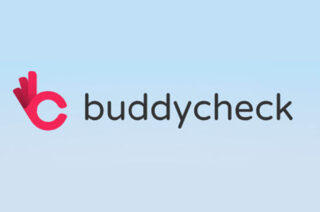Case Study: Assessment Forward Learning

Assessment Forward Learning is a formative assessment framework that enables students to critically assess their peer’s work in a way that constructively develops their own understanding of upcoming assessment criteria.
Why was this project needed?
Gianpaolo Vignali from the Department of Materials teaches on a 40 credit project unit. In previous cohorts students received past examples of the project to look through in an unstructured way, prior to starting their own work. Yet given the weighting of this piece of work, and its potential impact on degree classification, it was considered that more could be done to scaffold students understanding of their summative assessment marking criteria.
As a result, assessment for learning inspired a novel marking task that incorporated feed-forward and formative assessment principles in a blended learning environment (O’Donovan et al, 2008; Jones et al 2016). By adapting Peer Instruction methodologies students used a marking criteria to grade previous cohorts anonymised assignments. Students were asked to mark and review work individually and then in groups. The results revealed that over 90% of students who participated felt the task improved their understanding of the marking criteria and helped them achieve their best work.
The projects’ aim was to develop an innovative and creative teaching practice to help students better understand the guidance required to submit a good piece of work. In turn, this project aimed to enhance the student experience, assessment experience and provide formative feedback to improve student understanding and attainment.
How did they do it?
In preparation for this project a selection of previous years student submissions was obtained and anonymised. Works were selected that sat comfortably in the 1st, 2:1 and 2:2 grade boundaries.
Blackboard groups were used to split the current year’s cohort into groups of 4-6 students. Each group was allocated three pieces of anonymised student work from the previous year, each piece was from a different grade boundary.
Phase 1 (week n): Individual Reflection (online) and Group Reflection (online)
Students were put into groups and introduced to the task at the end of the lecture in week n. Their task was to:
- Individually review the allocated past assignments and rank them in order.
- Students were then asked to discuss their individual rankings and make a collective group decision via the VLE. Some groups discussed this online, other groups met face to face and posted their group decision online. When deciding on a Group Ranking students were asked to discuss and justify their decisions.
Phase 2 (week n+1): Marking Criteria Provided (in class) and Feeding back to feed forward (in class)
In the following lecture students were asked to sit in their groups that they were allocated to in the previous week. The marking criteria (rubric) used to mark the previous year’s submission (and also mark the current cohort’s final submission) was provided and students were asked to use the marking criteria to identify a mark for their allocated submissions.
Each group revealed the marks they had allocated for each of their allocated submissions and these were compared across the different groups. Then the “real” marks and feedback were revealed. Opportunities were provided for students to discuss the marking decisions they had made and they were encouraged to ask the academic lead questions relating to how the marking criteria had been used.
After the task had been completed. Students were asked to complete a short survey that assessed how useful they felt the exercise was and what they felt they had gotten out of it.
What did the students think?
This exercise has helped me to understand what is required to achieve a high first. Without exercises like this, it is really difficult to gauge what is expected of me as a student purely based on ILOs and marking schemes. Please carry on doing these!!
95% students agreed that this marking task had helped them understand how the unit content / curriculum is linked to the assessment and 93% agreed that the task would help them achieve their best work in the assignment (n=43).
88% of students agreed that the marking task had helped them to feel more prepared for the assignment with 93% agreeing the task had allowed them to understand the clarity of the marking criteria that will be used to assess their work.
Only 67% of students agreed that the task helped them understand how the ILO’s fit into the assessment for the unit, with one student sharing:
I still think there needs to be more of a link between the learning objectives and the task. I would have found it more helpful for the full marking rubric to be available when we receive the unit handbook so we can start the assessment earlier with confidence.
Impact in FSE
Traditionally, STEM students have had less opportunity to hone their writing skills by the time they enter Higher Education than their peers, and as such can often struggle with report and essay writing (Madison 2012). It is also true that our students need to be effective communicators to have successful careers when they leave the University. As such, it is incredibly valuable to take the time to help students better understand what constitutes a good piece of written work.
Feedforward principles are ideally suited to those situations when the learning value of feedback is curtailed, such as with this project when students were in their final year of their studies. Furthermore, with a project of this size it is impractical to have a ‘trial run’. Assessment forward learning equips students with skills before they begin their project, to help improve their attainment and overall satisfaction with the work they produce.
Peer instruction, which is used within this marking task, is generally heralded as a great tool to increase student learning and confidence (Tullis & Goldstone, 2020). Most students perceived value in having worked alongside their peers during this task, with 67% agreeing the marking task had helped them engage with their peers and 72% agreeing that working in a group and discussing the task with fellow students helped them improve their understanding of the marking criteria.
Get in touch
If you would be interested in exploring how a similar exercise could be developed for your own course or you have a similarly innovative feedback and assesment method to share with colleagues, please do get in touch.


